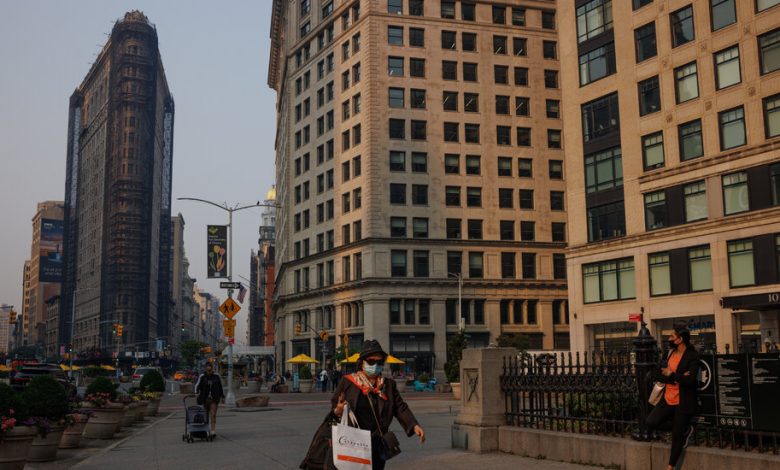The Flatiron Building Will Be Converted Into Condos

The Flatiron, the storied office building in the heart of Manhattan that has recently fallen on hard times, will be converted into luxury housing, its owners announced on Thursday.
The proposed redevelopment by the new owners is aimed at starting a second life for the Flatiron — its sole office tenant, Macmillan Publishers, departed before the pandemic — and moving past a dramatic period in which its fate seemed uncertain. In March, a little-known buyer won an auction for the building, only to disappear without paying.
The building’s future as housing began to take shape this week when the Brodsky Organization, a residential developer, bought a stake in the 22-story, triangular-shaped tower on Fifth Avenue. Brodsky will lead the conversion, carving out units — either for sale as condominiums or as rentals — from the notoriously awkward space.
Dean Amro, a principal at the Brodsky Organization, said that the project reflected “our confidence in New York coming back even stronger than before.”
The transformation is expected to take about three years, the owners said. They need approval from the Department of City Planning, a lengthy process that could take a year, and demolition and construction could take two years.
Mayor Eric Adams has made the conversion of struggling office buildings into residences a major component of his attempt to address New York City’s housing shortage.
Mr. Amro said that despite the Flatiron’s quirky interior, its numerous windows would make a conversion into residences far easier than most office buildings. But the construction would require some major internal changes: Stairs and elevators must be moved around and consolidated.
The exact layout and the number of new residences have not been determined. The owners have considered various plans, some with multiple units on each floor, with about 40 total residences. The ground floor, however, will remain retail space; T-Mobile has a store there with a long-term lease.
Jonathan J. Miller, the president of Miller Samuel Real Estate Appraisers and Consultants, said that the change made sense given the current state of the office market and that “whatever the configuration, I think it could succeed as an iconic landmark.”
Over its 121-year history, the Flatiron Building became as ubiquitous with Manhattan as the Empire State Building or the Chrysler Building.
At first, the skinny three-sided building by the architect Daniel H. Burnham, designed to fit an unusual lot, had many critics. But now, its neighborhood carries its name — the Flatiron district.
The neighborhood is also one of Manhattan’s most expensive and sought-after areas for residential housing.
Since 2019, though, the building’s upper floors have been empty after Macmillan vacated, and now, scaffolding envelops the Flatiron while workers repair its facade. For years, the previous ownership group could not agree on how to renovate the building, leading to a court-mandated sale earlier this year.
When the winning bidder failed to pay the $19 million deposit after the first auction, a second auction was held and won with a $161 million bid by a group led by Jeff Gural, who was the Flatiron’s majority interest holder and a New York real estate scion. A major office developer, Mr. Gural had hoped to maintain some or all of the office space in the Flatiron Building.
But Mr. Gural said the current economic conditions and larger office struggles made it clear that it would be better suited for residences.
“There are going to be 40 people who want to live in the Flatiron Building,” Mr. Gural said.




